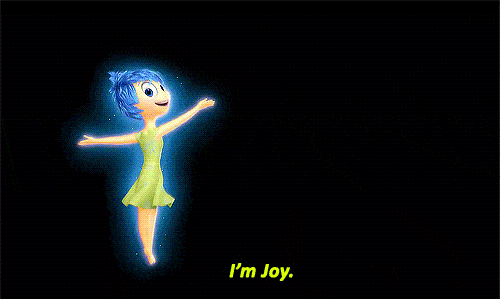We are all familiar with the wonderful films produced by Disney. Regardless of age and nationality, people flock to cinemas to see the latest release. Most of us can still remember characters we met when we were children and – even more importantly – the stories live on in our imaginations.
But what is the secret to their decades of success? We will show you what it is, why it’s so important, and how you can apply it in your own video to boost your business.
The secret is: fantastic storytelling!
Saying, “Tell a fantastic story” may sound easy to do, but it’s not. You can’t just produce a simple tale. It must be engaging, captivating, and appeal to the hearts and minds of the viewer. To do that you need to know and understand the audience.
This understanding is a crucial part of the Disney recipe; all their famous and much-loved classics such as “101 Dalmatians”, “Inside Out”, “Frozen”, or “The Lion King” draw on and use this knowledge.

In addition, all Disney films recognize certain basic human needs:
- To belong to a group or community
- To love and be loved
- To be a part of something bigger than ourselves.
By incorporating these into his films, Walt Disney communicates them in such a way that each viewer – no matter who they are – can relate to a character or some aspect of the story.
For instance, who doesn’t dream of finding their true love like Sleeping Beauty? She waited for her prince who freed her from the curse with a kiss. Who doesn’t want to be part of something bigger than ourselves that they believe in like Mulan? She disguised herself as a man and took her father’s place and bravely went into battle. Don’t we all want to be free just like Rapunzel who was trapped in her tower?
All of Disney’s films follow the same pattern or formula, and it works! Let’s take a closer look.
Disney's storytelling formula
If you watch the Disney movies, you will see a repeating pattern. This formula can also be used in the real world and in marketing, but more on that later… Disney’s incredibly successful recipe can be broken down into stages that both develop the story and draw the audience in.
#1 We are introduced to the world
Each Disney story or fairytale takes place in its own world. All of them are different and have their own realities and rules. Some are magical and present us with talking animals or cars with very human characteristics and natures. Others are a little closer to the world we are more familiar with.
The first step is to introduce the audience to this world so that they become familiar with it and understand the life in it.
Zootropolis: a city of talking animals
#2 We meet the main character
Once the viewer has settled into this new world, they meet the main character or characters in the story. We are introduced to their personalities and their typical behavior.
An effective way to do this is to show him or her going about their day so we become involved in their activities and, often, relate to them. As a result, our involvement and interest in the character and their world grows. We get drawn further into the story and begin to care and like or dislike certain characters.
#3 The main character faces a problem
At this point in the story the main character is confronted by a problem that poses great difficulty and even danger. An additional dimension is that often he or she must face their greatest fear or struggle with something or someone that highlights the weaknesses in their character.
The Jungle Book: Mowgli escapes from Bagheera
#4 The problem appears to be insurmountable
The hero then does everything he can to overcome the problem. However, he fails. After struggling with the situation, he doesn’t give up but realizes that dealing with it as he normally handles things will not work.
#5 The hero accepts the need to change
The next stage of the narrative shows how the character changes because he or she understands themselves better, learns lessons, and continues to grow and develop. This leads to our hero acting with new courage and greater determination!
Often this growth comes from within the character. In other stories, though, the learning and growth is aided by teachers or the support of friends. With this newly discovered strength the hero can tackle the problem again with fresh resolve and in a different way.

Elsa from the Frozen 2 and her transformation - she now approaches her problem differently.
#6 The triumphant return of the hero
The story often ends with the return of the main character to their home or the place the story began. Even if the place and the world are the same, our hero is not. He or she is different somehow: wiser, happier, or braver, for example.
An example of Disney’s successful formula in action: the 2015 film "Inside out"
These six stages are used in most of the studio’s films, as mentioned. One good example is the 2015, Oscar-winning “Inside Out” which was popular worldwide.
Spoiler alert: If you haven’t seen the film yet and want to, watch it now and then finish the article!
The opening stage presents the world from the perspective of the main character: a 11-year-old girl named Riley. The unique feature of Riley’s world is that she is guided by 5 emotions. Each one is represented by a small, colored character, and they live in her head which is known as the headquarters. These characters are Joy, Sadness, Fear, Anger, and Disgust. Although Riley defines these emotions, they control all her actions.

We are introduced to the emotions that drive Riley.
The problem arises when Riley and her parents move to another city and everything changes. Her emotions take over and one disaster after another take place in the control center. Worst of all, Joy and Sorrow are sucked out of headquarters. Anger, Fear, and Disgust are left in charge and the effect on Riley’s life is significant.
Riley has difficult days at her new school.
Joy and Sorrow will have a long, hard journey to find their way back. However, along the way Joy discovers that sometimes Sadness can be helpful, and that happiness and fun are not helpful in all situations. Almost at the end of their adventures an apparently impossible obstacle appears which they must overcome.
With the help of a friend, they succeed and manage to get back to headquarters. Joy realizes that all the emotions are important, and that Riley needs them all to live and grow.
“Yes, but that’s a movie”, I hear you say. So, how can the Disney formula work for you in your own branding video? The following section will make it clear.
Disney-style storytelling for your company
Storytelling is an immensely powerful tool because it allows us to engage with our audience and remain in their minds. Here are 3 steps that will help you to use the Disney formula for success for your company brand:
#1 Introduce your world to your audience
In this important first step you must bring your viewer into your world. This is not necessarily or only about products or services, significant as they are. You need to show the audience – who is standing outside looking in – what your world or company is.
Explain the rules and laws so the viewers can move into your world, get comfortable, and immerse themselves in it. Help them to understand your values and what is important to you. By this point your viewer should be fully engaged and drawn into the story you are telling.
#2 Identify the problem
It’s vital to introduce the audience to something or to show them something. Again, this doesn’t have to be a product or a service. It could be an emotion.
Give careful thought to:
- What problem you want to solve or draw attention to
- Which emotion(s) are associated with this situation/problem
- How you can evoke that emotion in your audience.
Regardless of what the “something” you show your viewer is, your focus must be on creating emotions because they are the key to the minds and hearts of your audience.
Crucially, you must stay focused on the interests of your target audience. Don’t get stuck in what interests you.
#3 Introduce the solution
The next phase shows the audience what the world looks like after the problem has been addressed and solved. If that’s not possible, show the viewer why its important to solve it. As part of this you will show your audience what your approach to solving this would be or look like.
In addition to ensuring that the “how” is clear, you need to effectively show the viewer why it is so important to solve the problem. The transformation is key: your audience must be able to clearly see the effects of the solution or the lack of one.
An excellent example of this kind of storytelling is Momondo, who created a series of videos called "DNA Path", and who successfully applied the three points outlined above. These videos have gone viral globally through various channels, gaining a staggering 120 million views in a single month.
The campaign documents 67 people from around the world who underwent a DNA test to discover their origins.
Each of these video spots effectively shows how the behavior and opinions of each participant changes over the course of their journey of personal discovery. These transformations in turn impact on the viewers and make them think.
The company Momondo speaks to their audience through thought-provoking and emotive slogans such as, “Let’s open our world” and, “You have more in common with the world than you think”. This travel company doesn’t just use standard slogans; they encourage greater social and cultural understanding and tolerance while indirectly offering travel services.
Do you want a video that will engage your target audience and win their hearts and minds? If you do, we will be happy to provide you with free, no-obligation advice.




